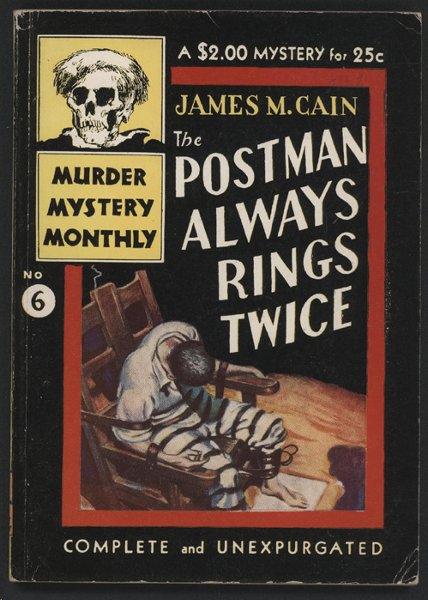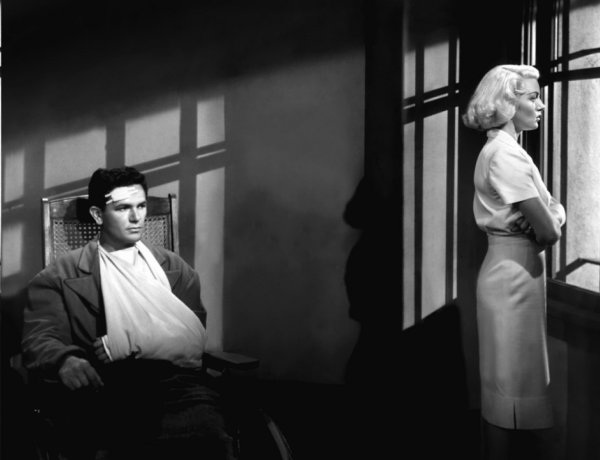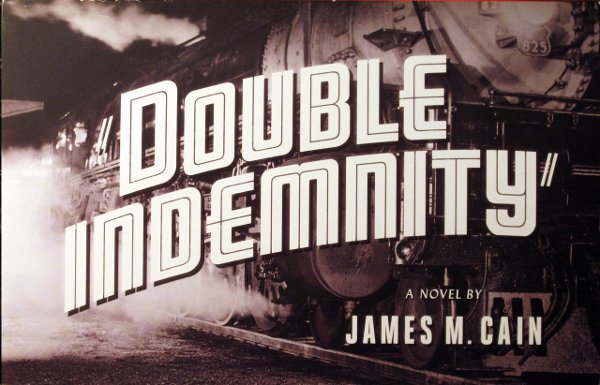The Lost and Found Story Of James M. Cain’s Last Novel

Dashiel Hammett (The Maltese Falcon), Raymond Chandler (The Big Sleep), and James M. Cain (The Postman Always Rings Twice) were the three giants of the noir crime novel to emerge in the late 1920s and ‘30s. These are the hard-boiled, tough-guy writers who defined the character of our country in that era. So it’s no surprise that after the books have been read and re-read, the films made and remade, the genre still continues to have a captive, thriving audience.
Charles Ardai, the founder of Hard Case Crime, the award-winning line of mystery novels published by Titan Books, spent almost nine years tracking down The Cocktail Waitress, the last novel of his favorite crime writer, and he’s passionate about it: “For fans of the genre, The Cocktail Waitress is the Holy Grail. It’s like finding a lost manuscript by Hemingway or a lost score by Gershwin—that’s how big a deal this is,” he said in an interview with Highbrow Magazine. Still, there were reservations.
“As Cain was a very old man, there was a fear that it wouldn’t be up to the standard,” he admitted, “but it’s a good book, a good read.” A classic Cain triangle, it’s the story of Joan Medford, an attractive young widow who wastes no time telling us that “my legs are my best point, as I’ve been told often enough.” Her eyes are “green and a bit large,” with a “cat look.” The same day that she buries her husband, she meets a handsome schemer and later, forced to take a job as a cocktail waitress to support her young son, she encounters Earl K. White, a wealthy older man whose touch repels her. As the story unravels in Joan’s own voice, the reader can choose whether or not to believe her side of things—is she grieving, or actually a black widow?

Ardai, an Edgar and Shamus Award-winning writer, first heard about the manuscript in 2002 from Max Allen Collins, another Hard Case writer. Collins claimed that Cain had mentioned it in an interview shortly before his death in 1977. “I’d given up hope of publishing anything by the Big Three,” Ardai confessed. “There wasn’t any unpublished Chandler, that was for sure.” In his opinion, Hammett may have had some unpublished short stories, but that was it. So Ardai put on his gumshoes and went to work.
It was an exhaustive search. The number of possible leads, including scholars, book dealers and overzealous fans, could fill Yankee Stadium. After all, this is the man who wrote Mildred Pierce and Double Indemnity, among many other novels, whose works sold millions of copies and were translated into 18 languages. The public’s addiction to these tales was as tempting as tobacco or alcohol. As Raymond Chandler in his introduction to The Simple Art of Murder explained it, “Possibly it was the smell of fear which these stories managed to generate. Their characters lived in a world gone wrong…a civilization had created the machinery for its own destruction, and was learning to use it with all the moronic delight of a gangster trying out his first machine gun.”
The turning point for Ardai was a trip to Hollywood to confer with his literary agent, Joel Gotler. Mentioning the elusive Cocktail Waitress manuscript, Gotler confessed he’d inherited the client files of a certain H.N. Swanson, “Swanie” as he was known in the industry, and those files just might hold a mother lode of information.

(It’s worthy to note here that when it came to literary properties and their creators, The Swanson Agency by 1939 boasted the likes of F. Scott Fitzgerald, William Faulkner, Raymond Chandler, and, naturally, James M. Cain. Present-day clients have included Kenneth Millar (Ross Macdonald), Elmore Leonard, Joyce Carol Oates and Paul Theroux.) “Swanie” was a busy man. He golfed with Clark Gable, went barhopping with Humphrey Bogart, and even changed the name of Fitzgerald’s novel, Trimalchio in West Egg to The Great Gatsby. But had he enjoyed a passing acquaintance with the manuscript in question?
A few days after Ardai returned to New York, an envelope from Gotler showed up in his mail. Inside was the manuscript he had been looking for the better part of a decade. Exciting? Yes, but he had barely scratched the surface. “It occurred to me, I don’t know why, to get in touch with The Library of Congress. I rode the train down from New York and I brought a camera with me.” He couldn’t remove anything from the Rare Manuscripts Division, but he could photograph the contents. “They had catalogued over 30 years of Cain’s works, over 100 boxes. When I got to boxes 99-100, they were devoted to The Cocktail Waitress and other works.”
The task became even more difficult. “His handwriting was dreadful,” Ardai sighed, “but he had a heart condition with a tremor which may explain it.” The writer also had at least two or three complete drafts of the work, as well as a heap of notes. The first 107 page draft was written in the third person, similar according to Ardai, to what Cain had done with Mildred Pierce. For Ardai, the confessional tone used in Double Indemnity and The Postman was much stronger. He judiciously lifted the best scenes from the initial version and put them in one of the first-person drafts.
When it came to his characters, Cain was an inveterate name-changer. How did Ardai sort that out? “I finally flipped a coin to see which he used the most or seemed the happiest with.”

Cain was not just a tinkler with names. When Joan obviously makes an impression on White, Cain wraps up the scene with Joan’s admission. “I knew I’d made a strike that could be important to me, but what stuck in my mind was: I wish I liked him better.” Cain crossed it out, making Joan say that “Pale or not, he was very good-looking and I liked him.” Ardai made a wise choice to leave the first version intact. As he explained, there’s a big difference between revulsion and attraction.
Cain’s familiar lingo can be spot-on. Joan’s new boyfriend Tom confronts her with her interest in Mr. White. “A worn-out, washed-out scarecrow…ugly to look at and I bet worse still to touch—but he’s got money.” “Don’t knock money,” she replies. “I need it. You need it. Show me the person who doesn’t need it.” Joan Medford’s dream for wealth and security comes true, but at what cost? In the preface to his novel, The Butterfly, Cain says the pattern of his mind is to write of the wish that comes true. “For some reason,” he goes on, “a terrifying concept, at least to my imagination.”
There are similarities between Joan Medford and her fictional counterparts. Joan takes a menial job like Mildred Pierce, ostensibly to make life easier for her child. Like Cora in Postman, she marries an older man but has a healthy libido that heats up at the slightest provocation. She shares with Phyllis in Double Indemnity the lust for money, if not murder. What’s missing in Cain’s last attempt if anything is the pacing, the intensity to win at all costs in this combustible mix of sex, money, and violence. The greatness in the previous books lay in the American dream turned into a nightmare you can’t wake up from. Here, it’s only hinted at and maybe a more mellowed Cain thought that was enough.
If the reader doesn’t insist on resuscitating the original Cain in all his noir-infused glory, there are rewards to be had. We get momentary glimpses of Cain’s shadow on the sidelines, in bits of dialogue, in the almost lascivious undertones we’ve come to expect. Joan Medford is a manipulator but we still want to believe her good intentions. In that way, Cain keeps us glued to the page, and the ending is worth the wait.
The final challenge for Ardai was obtaining the rights. With no family members to inherit Cain’s estate, the rights were left to a kindly neighborhood woman. Upon her death, the rights passed to her son and a literary agency now controls them. Ardai said the agent was afraid the book “might even tarnish the author’s legacy, but when they saw how strong the book was, they ultimately agreed to let us publish it.”
In Ardai’s afterword to the novel, he admits that Cain’s work “grabbed me by the lapels, or perhaps by the throat, and it hasn’t let go yet.” His respect is palpable. “There might be less dirt on bookstore and library shelves, and less sweat, less blood—but also less honesty, less art, and we’d all be the poorer for it.”
Author Bio:
Sandra Bertrand is a contributing writer at Highbrow Magazine.































































































































































































































































































































